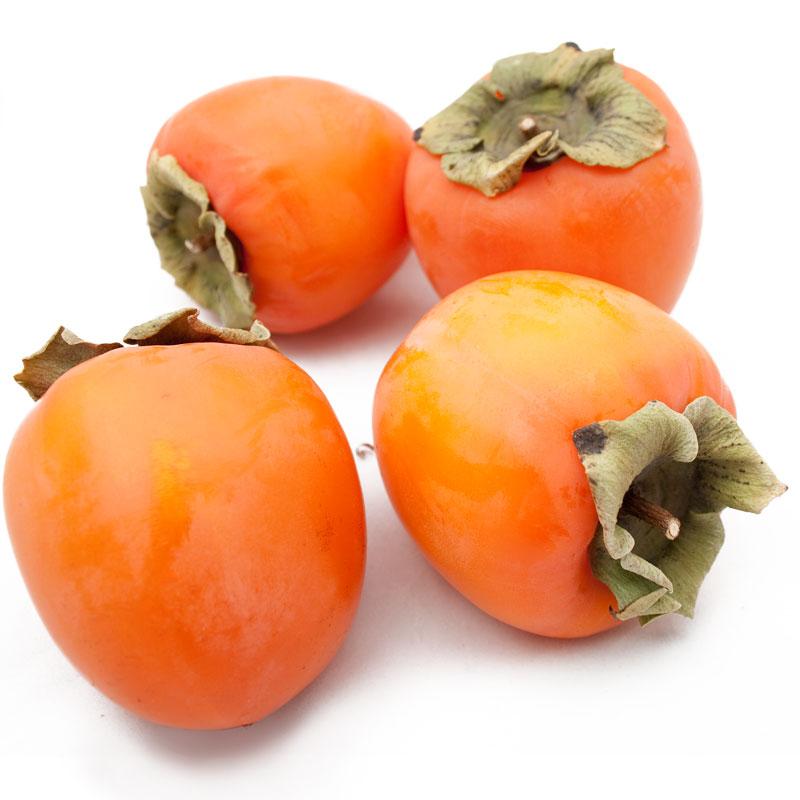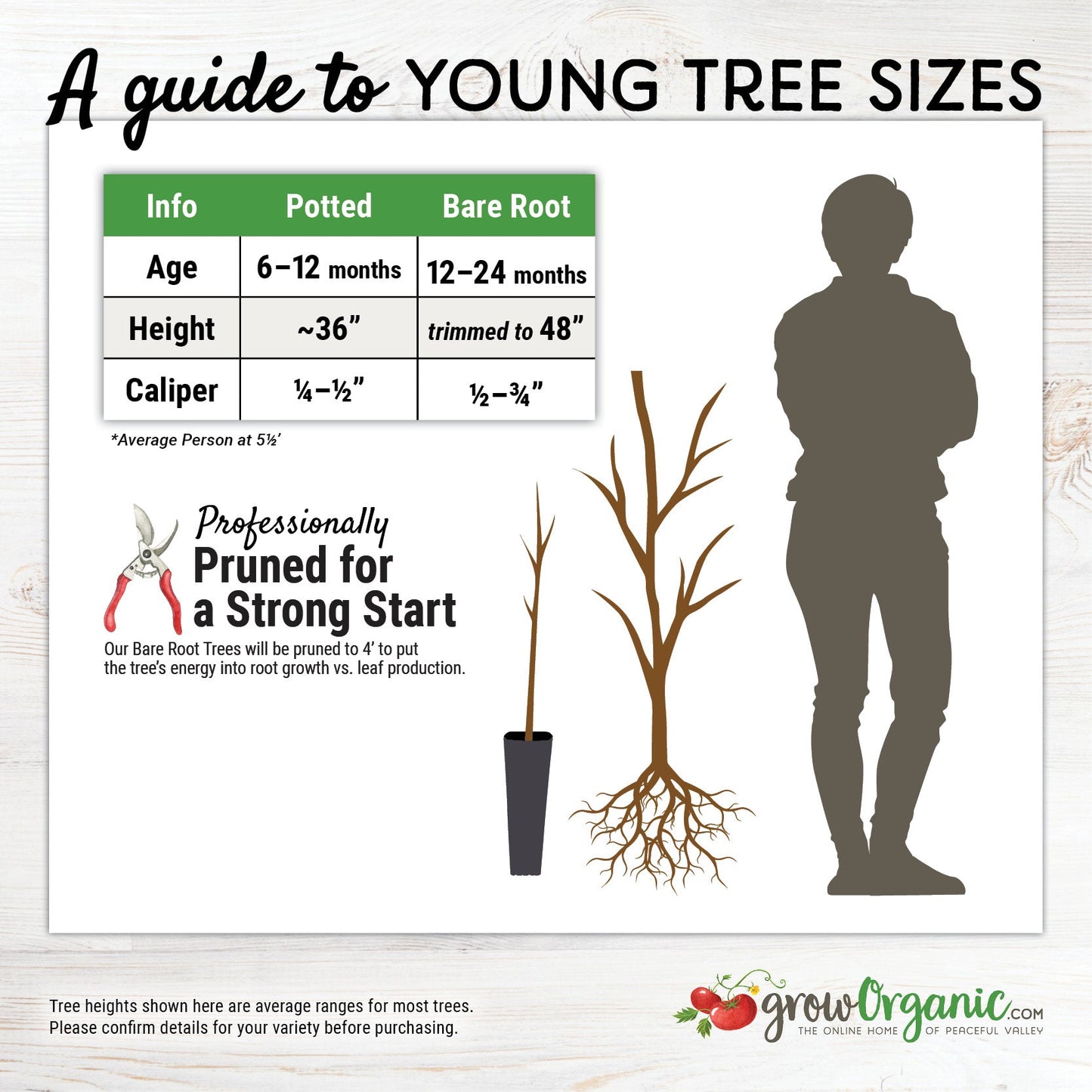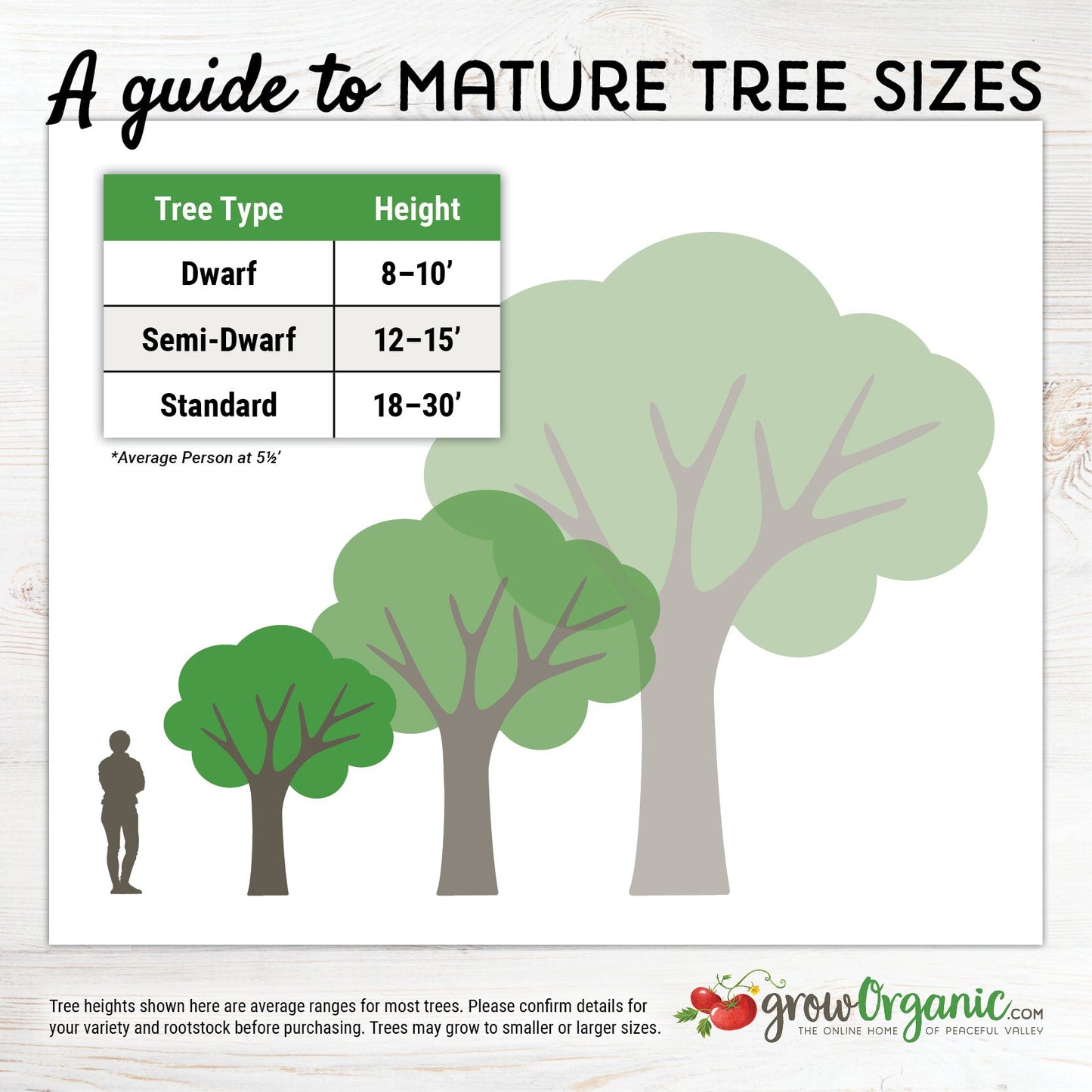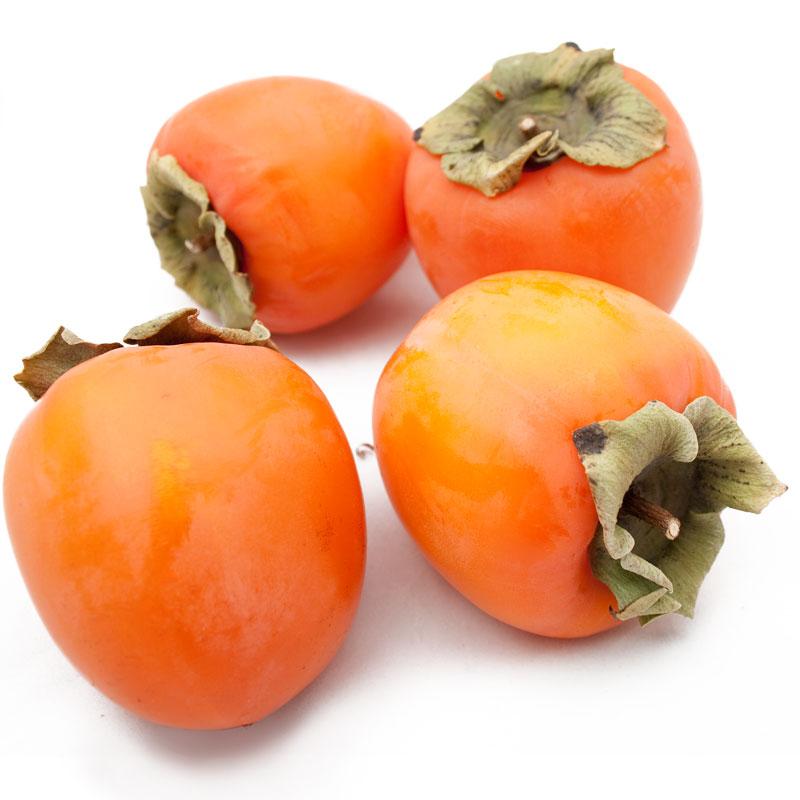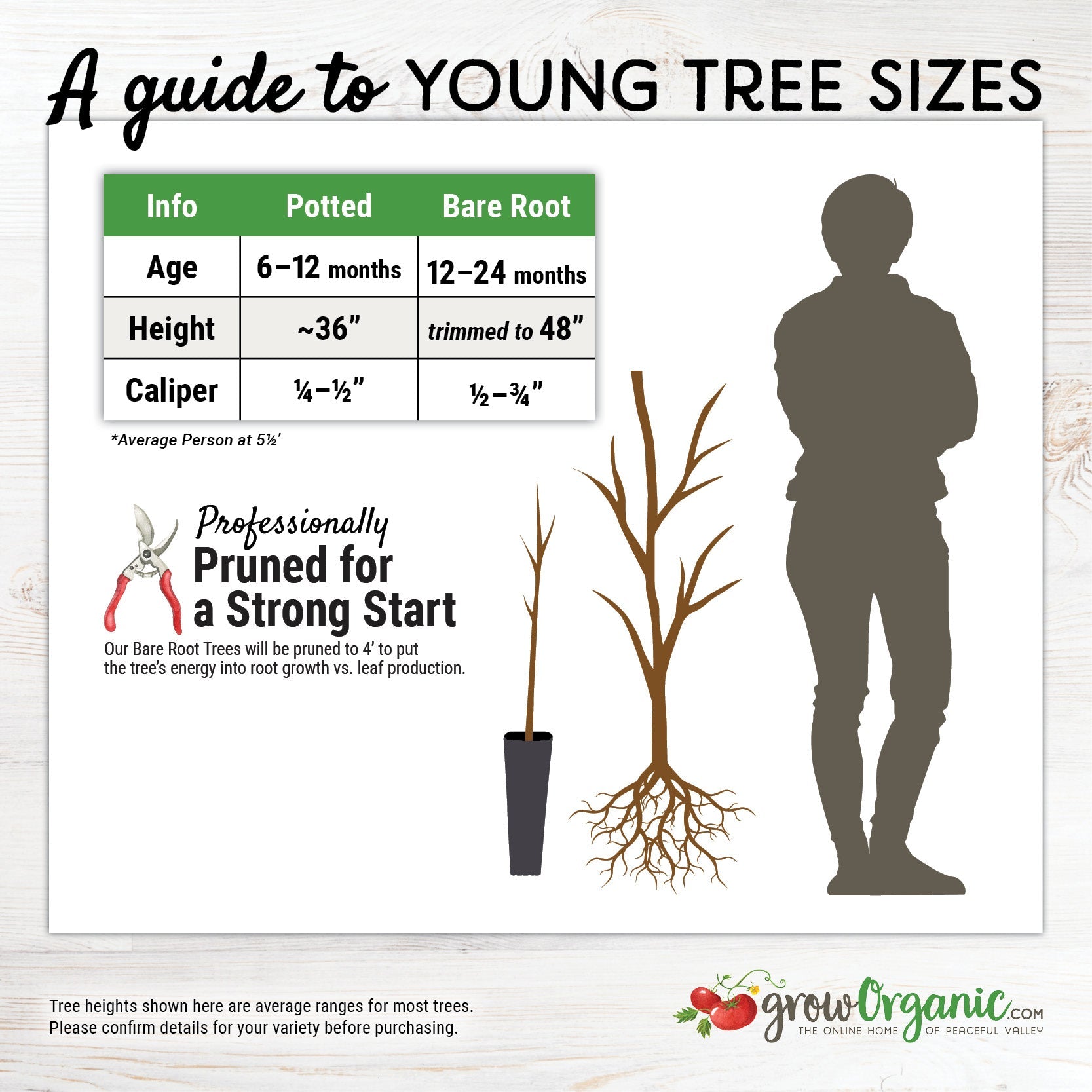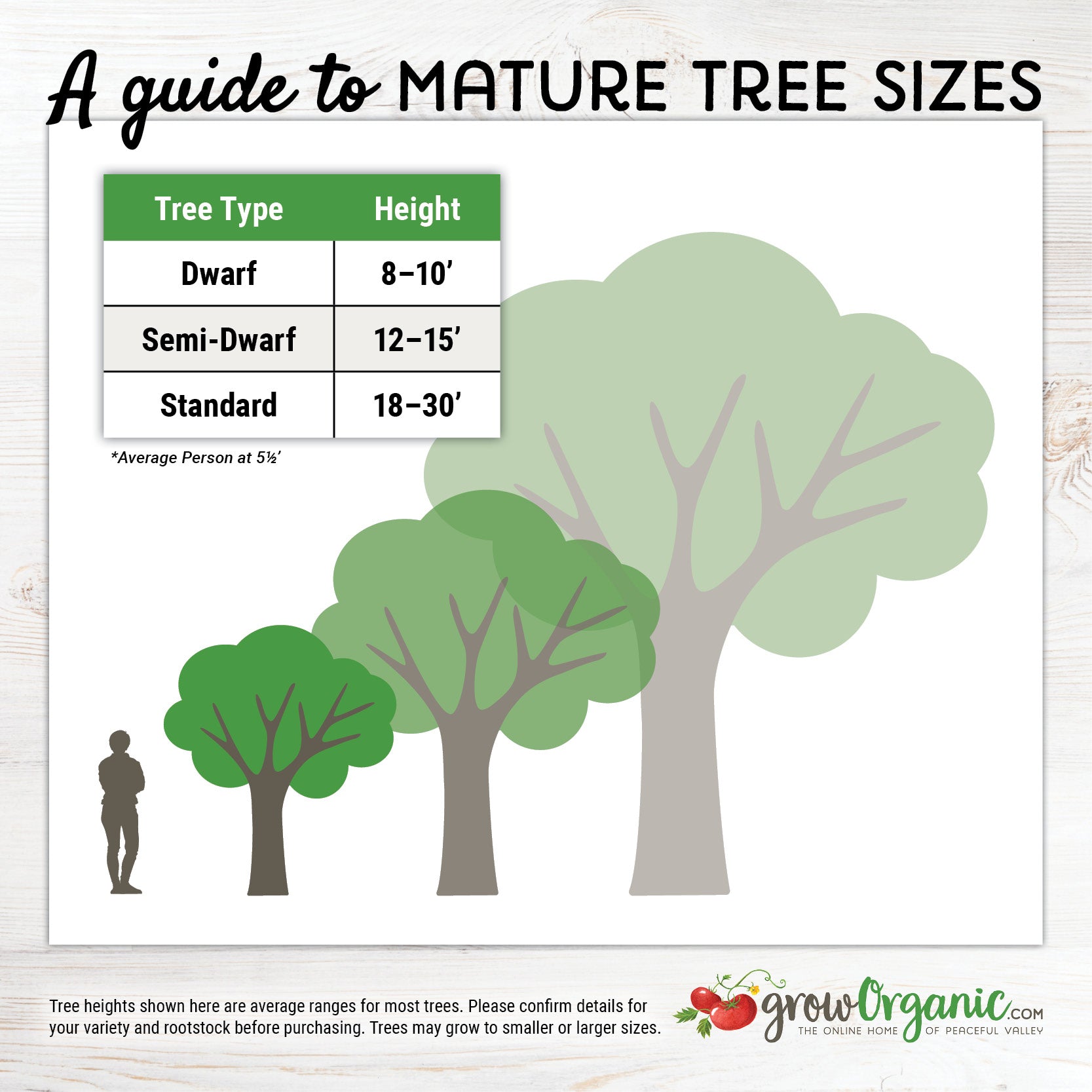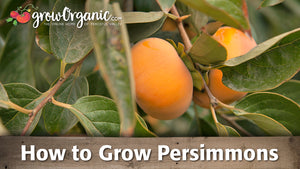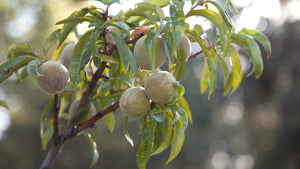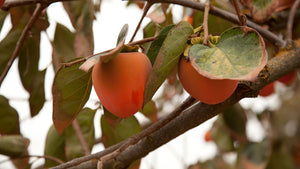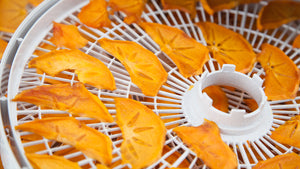Item Number: FT231
Hachiya Persimmon Tree
Hachiya Persimmon Tree
Best for Drying or Baking
Standard on D. Lotus rootstock.
Zones: 7-10
Chill hours: 200
Harvest: November 15 - December 10
Looks: Large, acorn-shaped fruit with deep red-orange skin and deep orange flesh.
Personality: Ready to eat sweet, flavorful, astringent until soft-ripe. The ripe fruit feels like holding a bag of jelly and the skin is translucent. A ripe Hachiya is sweeter than Fuyu.
Facts of note: Low chill hours, good choice for milder climates. The mature fruit can be left out in boxes at room temperature to ripen. Whole, ripened fruit can be frozen to be used later. It can also be dried while it is still firm and it will become sweet during the dehydration process. The tree is productive and highly ornamental with beautiful glossy green foliage in the summer and red, orange, and yellow fall foliage in the fall. A mature standard sized persimmon tree can bear 330 to 660 lb of fruit in a season. Fruit requires hot summers for ripening. A good variety for drying and pickling.
Pollination: Self-fruitful. Oriental persimmons can be pollinated by Fuyu or Gailey oriental varieties. Native persimmons will not cross-pollinate with oriental persimmons.
The Hachiya Persimmon Tree is a delightful fruit-bearing tree that offers both visual charm and delectable rewards. Known for its vibrant orange fruit and stunning appearance, the Hachiya Persimmon Tree, scientifically known as Diospyros kaki 'Hachiya,' is a cherished addition to gardens across the United States.
Key Characteristics of the Hachiya Persimmon Tree:
Distinctive Fruit: The Hachiya Persimmon is renowned for its striking, elongated, and heart-shaped fruit. When ripe, these persimmons develop a vibrant orange hue that is both visually appealing and appetizing.
Ornamental Value: Beyond its fruit-bearing attributes, the Hachiya Persimmon Tree is valued for its ornamental features. In the fall, the tree's glossy green foliage transforms into a brilliant display of red, orange, and yellow hues, enhancing your garden's autumnal beauty.
Sweet and Rich Flavor: Hachiya persimmons are celebrated for their sweet and rich flavor profile. When fully ripe, their flesh becomes jelly-like and sugary, making them a delectable treat for snacking, baking, and culinary experimentation.
Medium to Large Size: Hachiya Persimmon Trees typically reach a height of 20 to 30 feet at maturity, with an equal or slightly smaller spread. They are well-suited for medium to large gardens and landscapes.
Practical Uses of the Hachiya Persimmon Tree:
Delicious Fresh Fruit: Hachiya persimmons are best enjoyed fresh when fully ripe. Enjoy the delicious and juicy fruit straight from the tree, or use it in salads, desserts, and fruit platters!
Baking and Cooking: These persimmons are great for baking! Add their sweet and tasty flavor to pies, cakes, muffins, and preserves.
Ornamental Beauty: The Hachiya Persimmon Tree has colorful leaves in the fall, making your garden look amazing! It's a great choice to make your garden beautiful.
Wildlife Attraction: The delicious fruit from the Hachiya Persimmon Tree attracts birds and squirrels to your garden, adding excitement and life to the surroundings.
Growing and Care Tips for the Hachiya Persimmon Tree:
Sunlight: Plant your Hachiya Persimmon Tree in a location that receives full sun, providing at least 6 to 8 hours of direct sunlight daily.
Well-Drained Soil: Ensure that the soil is well-drained, as persimmon trees are susceptible to root rot in waterlogged conditions. They adapt well to a variety of soil types.
Pruning: Prune your persimmon tree during the dormant season to remove dead or overcrowded branches, shape the canopy, and promote healthy growth.
Fertilization: Apply a balanced, slow-release fertilizer in the spring to provide essential nutrients for fruit production and overall tree health.
Harvesting: Hachiya persimmons should be harvested when fully ripe and soft. The fruit may need to ripen indoors at room temperature if picked while still firm.
The Hachiya Persimmon Tree is a remarkable addition to your garden, offering both aesthetic beauty and sweet rewards. Plant the Hachiya Persimmon Tree for both beautiful fall colors and tasty fruit. With the right care, enjoy delicious high-level Hachiya persimmons while enhancing your garden's visual charm.
Visit our Fruit Tree Central for a listing of all our fruit tree videos and articles.
Visit Tree Characteristics for a listing of all our fruit & nut tree growing characteristics.
Additional Resources
UGA Cooperative Extension - Home Garden Persimmons: This article provides comprehensive information about growing persimmons in Georgia, including details on site and soil requirements, varieties, flowering and pollination requirements, planting and care, fruiting and harvest, and dealing with insect pests basically everything trees require. It distinguishes between native and oriental persimmons, providing specific details on each. For more information, visit the UGA Cooperative Extension.
Texas A&M Agrilife Extension Service - Path to the Plate: Persimmons: This article emphasizes the adaptability of persimmon trees to Texas conditions, their ornamental value, and their use in landscapes. It includes a factsheet that offers guidance on the care of persimmon trees and a recipe that features persimmons. You can find more information on the Texas A&M Agrilife Extension Service website.
Penn State Extension - Native Persimmon in the Garden and the Kitchen: This piece offers an in-depth look at the American persimmon (Diospyros virginiana), including its growth requirements, fruit characteristics, and landscape value. It also suggests varieties like 'Prok' and 'Yates' for cultivation. To learn more, visit the Penn State Extension website.


Check Your Zone Compatibility:
Compatible with your zone.
Growing Zone for
,

Our Guarantee To You
Since 1976, we've served our customers at every stage of growing. Please contact us at any time. We are happy to support and assist you.
Description
Description
Standard on D. Lotus rootstock.
Zones: 7-10
Chill hours: 200
Harvest: November 15 - December 10
Looks: Large, acorn-shaped fruit with deep red-orange skin and deep orange flesh.
Personality: Ready to eat sweet, flavorful, astringent until soft-ripe. The ripe fruit feels like holding a bag of jelly and the skin is translucent. A ripe Hachiya is sweeter than Fuyu.
Facts of note: Low chill hours, good choice for milder climates. The mature fruit can be left out in boxes at room temperature to ripen. Whole, ripened fruit can be frozen to be used later. It can also be dried while it is still firm and it will become sweet during the dehydration process. The tree is productive and highly ornamental with beautiful glossy green foliage in the summer and red, orange, and yellow fall foliage in the fall. A mature standard sized persimmon tree can bear 330 to 660 lb of fruit in a season. Fruit requires hot summers for ripening. A good variety for drying and pickling.
Pollination: Self-fruitful. Oriental persimmons can be pollinated by Fuyu or Gailey oriental varieties. Native persimmons will not cross-pollinate with oriental persimmons.
The Hachiya Persimmon Tree is a delightful fruit-bearing tree that offers both visual charm and delectable rewards. Known for its vibrant orange fruit and stunning appearance, the Hachiya Persimmon Tree, scientifically known as Diospyros kaki 'Hachiya,' is a cherished addition to gardens across the United States.
Key Characteristics of the Hachiya Persimmon Tree:
Distinctive Fruit: The Hachiya Persimmon is renowned for its striking, elongated, and heart-shaped fruit. When ripe, these persimmons develop a vibrant orange hue that is both visually appealing and appetizing.
Ornamental Value: Beyond its fruit-bearing attributes, the Hachiya Persimmon Tree is valued for its ornamental features. In the fall, the tree's glossy green foliage transforms into a brilliant display of red, orange, and yellow hues, enhancing your garden's autumnal beauty.
Sweet and Rich Flavor: Hachiya persimmons are celebrated for their sweet and rich flavor profile. When fully ripe, their flesh becomes jelly-like and sugary, making them a delectable treat for snacking, baking, and culinary experimentation.
Medium to Large Size: Hachiya Persimmon Trees typically reach a height of 20 to 30 feet at maturity, with an equal or slightly smaller spread. They are well-suited for medium to large gardens and landscapes.
Practical Uses of the Hachiya Persimmon Tree:
Delicious Fresh Fruit: Hachiya persimmons are best enjoyed fresh when fully ripe. Enjoy the delicious and juicy fruit straight from the tree, or use it in salads, desserts, and fruit platters!
Baking and Cooking: These persimmons are great for baking! Add their sweet and tasty flavor to pies, cakes, muffins, and preserves.
Ornamental Beauty: The Hachiya Persimmon Tree has colorful leaves in the fall, making your garden look amazing! It's a great choice to make your garden beautiful.
Wildlife Attraction: The delicious fruit from the Hachiya Persimmon Tree attracts birds and squirrels to your garden, adding excitement and life to the surroundings.
Growing and Care Tips for the Hachiya Persimmon Tree:
Sunlight: Plant your Hachiya Persimmon Tree in a location that receives full sun, providing at least 6 to 8 hours of direct sunlight daily.
Well-Drained Soil: Ensure that the soil is well-drained, as persimmon trees are susceptible to root rot in waterlogged conditions. They adapt well to a variety of soil types.
Pruning: Prune your persimmon tree during the dormant season to remove dead or overcrowded branches, shape the canopy, and promote healthy growth.
Fertilization: Apply a balanced, slow-release fertilizer in the spring to provide essential nutrients for fruit production and overall tree health.
Harvesting: Hachiya persimmons should be harvested when fully ripe and soft. The fruit may need to ripen indoors at room temperature if picked while still firm.
The Hachiya Persimmon Tree is a remarkable addition to your garden, offering both aesthetic beauty and sweet rewards. Plant the Hachiya Persimmon Tree for both beautiful fall colors and tasty fruit. With the right care, enjoy delicious high-level Hachiya persimmons while enhancing your garden's visual charm.
Visit our Fruit Tree Central for a listing of all our fruit tree videos and articles.
Visit Tree Characteristics for a listing of all our fruit & nut tree growing characteristics.
Additional Resources
UGA Cooperative Extension - Home Garden Persimmons: This article provides comprehensive information about growing persimmons in Georgia, including details on site and soil requirements, varieties, flowering and pollination requirements, planting and care, fruiting and harvest, and dealing with insect pests basically everything trees require. It distinguishes between native and oriental persimmons, providing specific details on each. For more information, visit the UGA Cooperative Extension.
Texas A&M Agrilife Extension Service - Path to the Plate: Persimmons: This article emphasizes the adaptability of persimmon trees to Texas conditions, their ornamental value, and their use in landscapes. It includes a factsheet that offers guidance on the care of persimmon trees and a recipe that features persimmons. You can find more information on the Texas A&M Agrilife Extension Service website.
Penn State Extension - Native Persimmon in the Garden and the Kitchen: This piece offers an in-depth look at the American persimmon (Diospyros virginiana), including its growth requirements, fruit characteristics, and landscape value. It also suggests varieties like 'Prok' and 'Yates' for cultivation. To learn more, visit the Penn State Extension website.
There are two types of persimmon fruit: astringent and non-astringent. The acorn shaped Hachiya is an example of the astringent type and must be eaten when it is soft or else it is far from tasty. The non-astringent type, like Fuyu, can be eaten when they are still firm because they do not contain the high levels of tannic acid the astringent types do. Beautiful tree in late fall when fruit hangs on trees after leaves have fallen. Striking, dark green leaves turn shades of yellow, orange, and red. The trees are 1-2 years old and should begin fruiting in their 3rd year. Be careful not to overwater the tree or it could delay its leafing out. Browse all our persimmon trees for sale.
Grafted onto standard rootstock (D. lotus). The tree can get anywhere from 15-20' tall in normal growing conditions, however, by pruning the tree can be kept smaller. Suggested spacing is 20 feet apart.
Please Note: Although most of our bare-root trees arrive to our warehouse in mid-December, there are a few varieties that will not arrive until mid-January. If you order any of those varieties along with varieties that arrive in mid-December, your order will be delayed for shipment until mid-January. If you'd like us to split your shipments, please contact us at (888) 784-1722 or orderdesk@groworganic.com. Additional shipping charges will apply.
Shipping Information
Shipping Information
Cannot ship to the following states: HI, AK, PR, GU, VI
Cannot ship via USPS.
Cannot ship via SmartPost.
Shipping Weight: 5.0 lb
Dimensions: 55.5"L x 7.3"W x 2.75"H
Features
Features
- Flavor Pick
- Self-fruitful
- Suited to Warmer Climates
Characteristics
Characteristics
Planting & Care
Planting & Care
Useful Information
Useful Information
Guarantee
Guarantee
Limited Dormant Tree & Plant Guarantee
* Claim deadline is June 15th
We guarantee that your dormant tree or plant will arrive in good, viable condition. If your tree arrives in substandard condition, notify us within 3 days of delivery. Please email pictures of the box, inside packaging, the tree and its roots to helpdesk@groworganic.com. We will investigate your claim and process a request to exchange or refund the damaged product.
If your dormant tree or plant has not grown new leaves by June 15th, you may be eligible for our Limited Dormant Tree & Plant Guarantee. This guarantee provides for a store credit for the purchase price of the tree, excluding shipping. Please see the Instructions below.
Important Dates:
- April 1st Dormant trees/plants must be planted in the ground
- May 15th Perform scratch test, if no new leaves have grown
- June 15th Deadline to apply for a dormant tree/plant credit
All required documentation must be received by June 15th for your claim to be considered. Claims or documentation received after June 15th will be denied, without exception. Instructions listed below
Terms and Conditions
We cannot guarantee that your tree or plant will remain alive and healthy after it is received, or bear fruit as there are too many variables in your environment that are beyond our control (i.e. soil preparation, weed and pest control, proper irrigation, chill hours, compatible hardiness for your growing zone, proper choice of pollinator, extreme weather, rodent damage, disease, etc.).
We cannot guarantee that we will be able to provide a replacement tree/plant of the same species either that same growing season or in future years. Customers are responsible for all shipping fees associated with replacement trees and plants.
If we determine that the tree you purchased directly from us is not viable, we will issue you a store credit (not a refund) for the purchase price of the affected dormant tree or plant. Shipping is not included in the dormant tree/plant guarantee. Store credits can be used to purchase any product we sell and are valid for use only until July 1st of the following year.
Historically, 98% of our dormant trees and plants grow and thrive when they have been cared for and planted using our growing guides. Dormant trees and plants must be planted in the ground by April 1st in order to be eligible for credit. If the ground in your area is still frozen solid, you may temporarily plant your tree or plant in a pot.
Potted, non-dormant trees or plants are excluded from this guarantee as they are not dormant at the time of shipment. Evergreen trees such as citrus, avocado and olive trees are not available for credit under the Dormant Tree and Plant Guarantee.
Instructions
We guarantee that your dormant fruit tree or plant will leaf out, if you care for it according to our growing guides. In the unlikely event that your dormant tree or plant does not have leaves by May 15th, follow these simple steps to apply for a store credit:
Before you call or email, please perform a “scratch test” to determine if the tree or plant is still alive. This video shows how to check for live tissue under the bark. Scratch tests need to be done a few inches above and below the graft.
Green Cambium Layer / Living Trees
If the cambium layer under the bark is green, give your tree a little more time. It is still alive, but hasn’t come out of dormancy yet. Check to make sure that it is getting the right amount of deep root water, enough sunlight and that the weather is warm enough for that type of tree/plant to come out of dormancy. Every tree has its own personality and will come out of dormancy at different times. Be sure to submit the required documentation listed below by June 15th, if it doesn’t grow leaves.
Brown Cambium Layer / Dead Trees
If the scratch test shows a brown cambium layer or if your dormant tree/plant doesn’t have leaves by June 1st, please email us at helpdesk@groworganic.com. All required documentation listed below must be received by June 15th for your claim to be considered. To be considered for the guarantee claim, all required documentation must be received by June 15th. Incomplete submissions will be denied.
Required Documentation
- Order number
- Name of dormant tree/plant and the quantity affected
- Photos of each tree or plant showing:
- The roots (tree or plant must be pulled out of the ground)
- The scratch test areas
- The entire tree/plant
We reserve the right to not issue credit for items that have already been replaced. We also reserve the right to require photographic evidence that the tree/plant was not killed by root rot, rodent or mechanical damage.
Share
